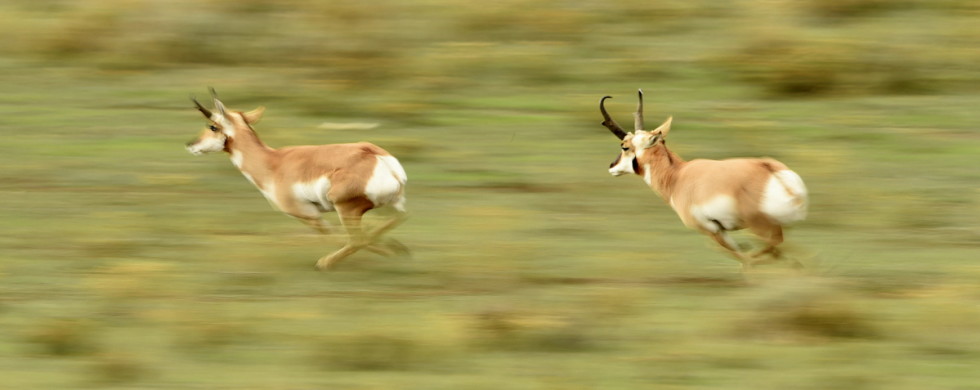
31
2014Capturing Speed
Shot of the Month – December 2014
The Pronghorn is a one-of-a-kind, American original. Though we sometimes call it the “Pronghorn Antelope” or “American Antelope,” and despite his looks, the Pronghorn is not an antelope. Pronghorns are the only surviving member of its family (Antilocapridae) and has no close relatives on this continent or any other. In case you were wondering, there are no antelopes in the New World.
The defining characteristic of the Pronghorn is its speed — it is the fastest land mammal in North America. We all know that the fastest animal in the world is the cheetah (see my write-up here). While difficult to measure the cheetah may be able to reach speeds up to 75 mph. The top speed for the Pronghorn is believed to top out around 53 mph. However, one could make an argument that the Pronghorn is the fastest animal alive. How so? Well, the cheetah can only maintain his top speed for a few hundred yards while the Pronghorn can reach 53 mph for a few hundred yards but then cruise at 30 mph for miles and miles. And miles. No other land mammal can keep up with the Pronghorn over a long distance.
The speedy nature of the Pronghorn is a bit of a mystery as none of its current predators, cougars, wolves, coyotes, or bobcats can run that fast. Some scientists posit that Pronghorns developed their speed in response to now-extinct predators like the American cheetah.
In the fall of 2014, I visited Yellowstone NP and spent some time among a herd of Pronghorn during the rut. I was able to see up close the explosive speed of the Pronghorn male as he would chase off rivals or corral errant females. I wanted to try and make an image that would convey the speed of the Pronghorn. Ironically, to demonstrate speed, the trick is to slow the camera down. I normally obsess about ensuring that I use proper technique and camera settings to allow for the sharpest images possible. For this image, I had to fight all my instincts and lower my shutter speeds to allow blur into the photo. I normally shoot with a shutter speed near 1/1000 of a second to stop the action and ensure razor sharpness; for this image, the shutter speed was 1/30 of a second. The key is to pan the camera at the same speed as the subject to try and keep it at least partially in focus while the background blurs with the motion. I experimented with shutter speeds of 1/15s, 1/30s, 1/45s, 1/60s, 1/90s, and 1/125s. The slower the shutter speed the more dramatic the effect. And all the harder to get something pleasing.
A few examples of how shutter speed can change the look of the image:
Here the shutter speed was 1/500s. Fast enough to completely stop the running Pronghorn. It is a decent photo but the image is oddly static given that it is a picture of a running animal.
Here the shutter speed was 1/125s. A bit of background blur is introduced while the Pronghorn is still quite sharp. Starting to get a sense of motion.
A shutter speed of 1/45s was used for this shot. More blur with the background and now the legs are starting to blur.
Here a shutter speed of 1/15s. The image is becoming more abstract.
I had a blast experimenting with the new approach and exploring new ways to communicate the story I was trying to tell. So, which image do you like best?
Until next month….m
Nikon D4S, Nikon 600 mm w/ 1.4x TC (850mm), 1/30s, f/11, ISO 200, +0.5 EV

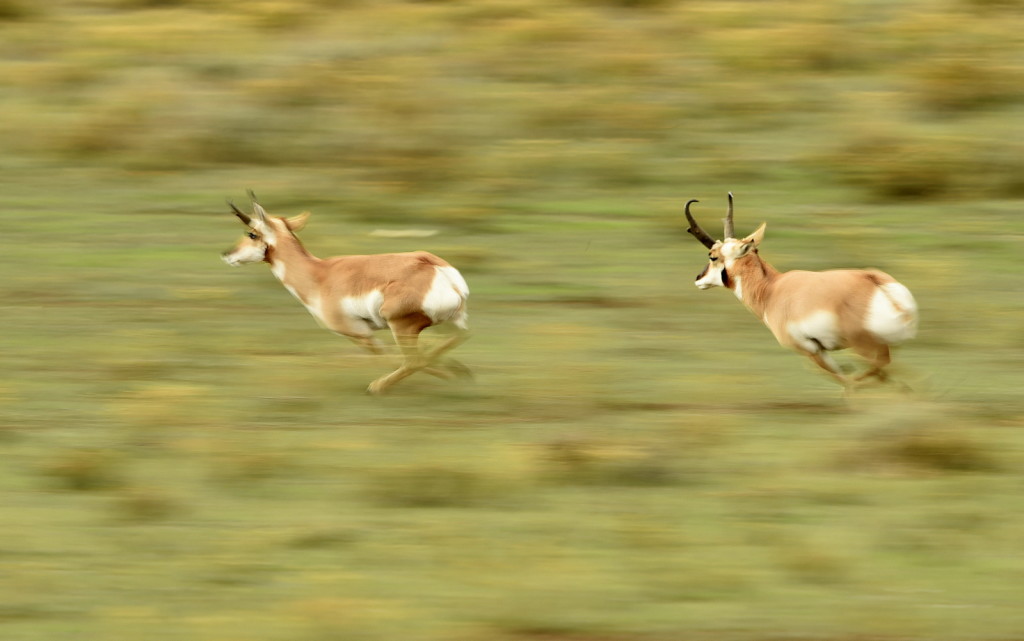
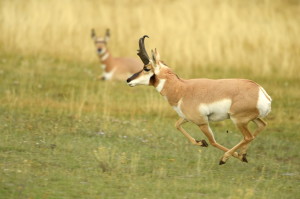
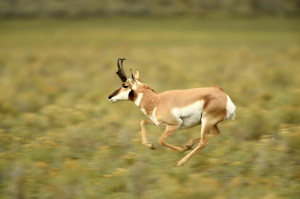
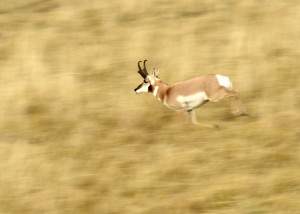
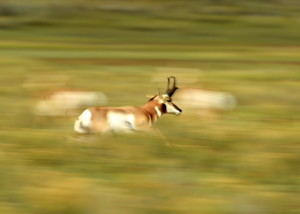
Patricia Mountjoy
Of course I liked best the one you chose. The two figures made a nicer composition. The 1/500 is very nice with the other pronghorn resting in the background. However, the pronghorn in motion almost looks like her is jumping up rather than moving.
Interesting commentary. Always a treat to see your latest subject and learn the history and your photographic techniques and experiments.
Best regards from patty